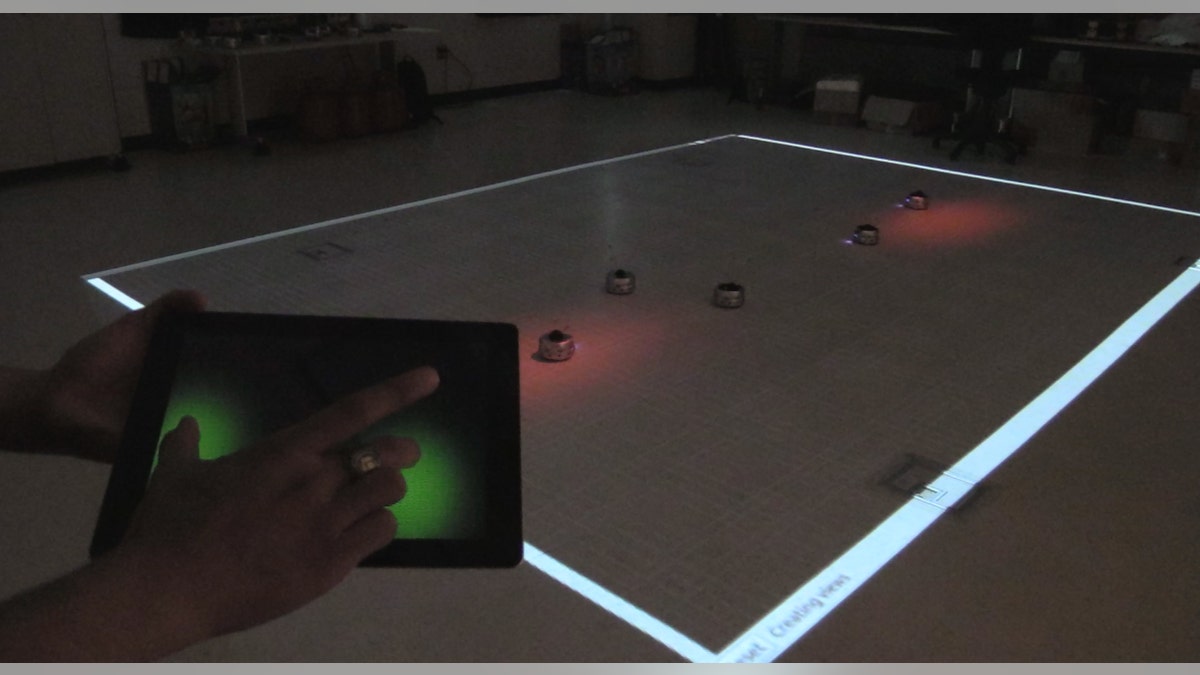
(Screenshot from Georgia Tech YouTube video)
Researchers at Georgia Tech have built a tablet-based system that lets people control a fleet of robots with just the swipe of a finger.
The system uses a beam of light on the floor, according to Georgia Tech. The ‘swarm’ robots, which are in constant communication with each other, roll toward the illumination, and decide how to evenly cover the lit area.
Researchers say that when someone swipes the Apple iPad to drag the light across the floor, the robots follow. If, however, the person puts two fingers in different locations on the tablet, the machines split into teams and start the ‘swarm’ process again.
‘Swarm’ robots have already been tested by a number of organizations, from the U.S. military, to oceanographers. Georgia Tech says that its algorithm for controlling large teams of robots could be used in areas such as manufacturing, agriculture, and disaster relief.
“It’s not possible for a person to control a thousand or a million robots by individually programming each one where to go,” said Magnus Egerstedt, Schlumberger Professor in Georgia Tech’s School of Electrical and Computer Engineering, in a statement. “Instead, the operator controls an area that needs to be explored. Then the robots work together to determine the best ways to accomplish the job.”
Georgia Tech says that its robotic algorithm is flexible enough to let robots “change their minds." In a demonstration of the system, each robot is constantly measuring how much light is in its local “neighborhood.” When there’s too much light in a robot’s area, it moves away so that another robot can steal some of its light.
“The robots are working together to make sure that each one has the same amount of light in its own area,” explained Egerstedt.
“In the future, farmers could send machines into their fields to inspect the crops,” said Georgia Tech doctoral candidate Yancy Diaz-Mercado, in the statement. “Workers on manufacturing floors could direct robots to one side of the warehouse to collect items, then quickly direct them to another area if the need changes.”
Georgia Tech’s study is supported by the Air Force Office of Scientific Research.




















